Contents
- What is the danger of the appearance of whiteflies in the greenhouse
- Methods of dealing with whitefly in a greenhouse in spring
- How to get rid of the whitefly in the greenhouse in the spring folk remedies
- How to deal with the whitefly in the greenhouse in the spring with chemicals
- Biological and mechanical methods of control
- Preventive measures
- Conclusion
Greenhouse owners often encounter such a pest as the whitefly. This is a harmful insect that belongs to the family of aleyrodids. The fight against the parasite is characterized by a set of measures that must be carried out systematically. It is not so easy to process a greenhouse from a whitefly in the spring. You need to know how to act on the pest, how and when to do it and with what interval.
What is the danger of the appearance of whiteflies in the greenhouse
From the whitefly, harm comes from both larvae and adults. The pest has its own preferences: he loves the tomato more than pepper and eggplant. Its appearance in the greenhouse can lead to the death of the plant in a matter of days. So, for example, the larvae suck out the juices from the plant, which are necessary for growth and development. Their number increases very quickly, the seedlings begin to weaken and eventually die.
The pest is very small in size, as can be seen in the photo:
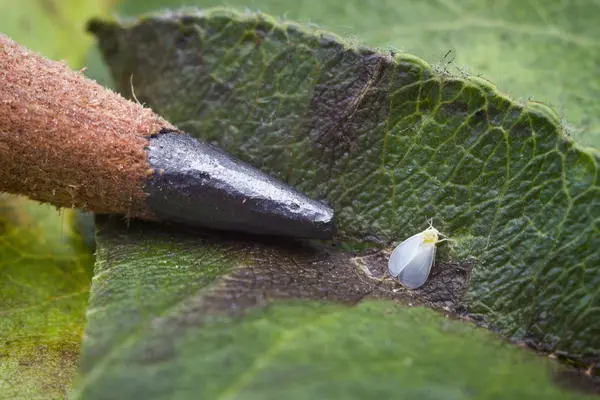
An individual representative cannot have a noticeable effect on vegetation. However, the whitefly always acts as a group: a group of pests appears immediately, which cannot be overlooked. Thousands of tiny white moths instantly start attacking the plants.
Another danger is that the larvae secrete a sugary substance in the course of their life. Thus, they create ideal conditions for the appearance of soot fungus. It actively develops in this environment, a sticky black layer appears on the leaf, which leads to clogging of the stomata. The metabolism is disturbed, the leaves dry up and die.

In addition, a malicious insect carries a large number of viruses. It can infect plants with various diseases, as a result, you will have to fight not only with the whitefly, but also with the ailments that it caused in the greenhouse crop. As a rule, in this case, the process of struggle increases in duration, and the seedlings recover much harder.
Methods of dealing with whitefly in a greenhouse in spring
Destroying the whitefly is very difficult. In the same period of time, several stages of the pest live and multiply in the greenhouse. Among them there are those who painlessly endure the effects of chemicals. That is why the control methods consist in the application of complex processing measures.
Among the methods of struggle used are the following:
- folk remedies;
- chemicals;
- biological and mechanical.
Each of the methods is aimed at the destruction of one or another stage of development of the whitefly. So, for example, it is impossible to get rid of larvae mechanically, but this can be done biologically or chemically. Therefore, in the fight against the pest, it is necessary to use a complex of different measures at once.
How to get rid of the whitefly in the greenhouse in the spring folk remedies
The means of folk craft will help get rid of the pest. In order for the result to justify itself, it is better to use several different methods. One of them is freezing the greenhouse.
Even if it was possible to overcome pests and harvest in the first year, this will not guarantee that the whitefly will not appear again next year. In the form of pupae, they can hide in the ground for a long time. It is known that the whitefly dies at a temperature of -10 ° C and below. And in order not to have to fight with the same pest in subsequent years, it is necessary to freeze the soil and buildings. To do this, it is necessary to carefully dig the soil before the start of frost, and then leave the greenhouse open for two to three days at the time of cold weather.
Spring treatment of the greenhouse from the whitefly will be associated with the use of various infusions. A small number of aleurodides can be dealt with by washing the leaves with warm water or soapy water. The procedure should be carried out several times a day. If the population has reached a large number, then garlic solution, infusion of yarrow, dandelion, tobacco infusion are used in the treatment. Such means can even affect plants that are already affected.
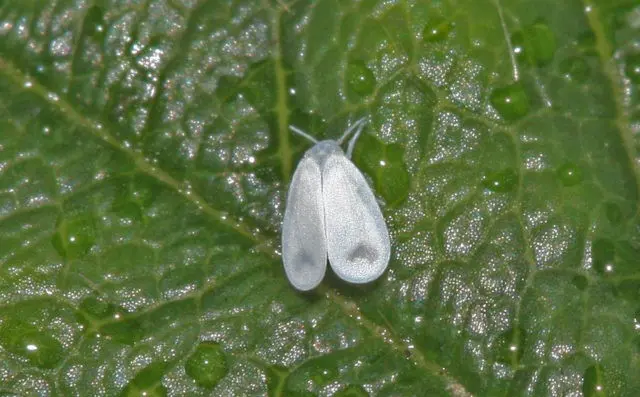
Video on how to destroy the whitefly folk remedies:
How to deal with the whitefly in the greenhouse in the spring with chemicals
Of course, greenhouse chemicals are not the best option. But nothing else helps, it remains only to use insecticides. The advantage of such means is that they destroy the pest at all stages of life. Good results show the following drugs:
- “Confidor”. Suitable for plants already affected by parasites. At the same time, it also destroys whitefly eggs.
- Fitoverm. In this case, the prescribed dosage should be increased: 10 ml per 1 liter of water.
- “Actara”. It is excellent both in the initial stages of the appearance of aleurodides, and in more advanced ones.
- “Match”. Helps in the fight against larvae and eggs.
The last drug on the list is considered a hormonal remedy. The combined use of chemistry and a hormonal drug will help get rid of both the moth itself and the larvae with eggs. Thanks to this, the pest will be eliminated not for a certain period of time, but forever.
Biological and mechanical methods of control
The use of chemicals based on whiteflies in the fight against whiteflies bring very good results. But they also contribute to the appearance of toxic substances in the fruits, due to which the vitamins in the fruits of the plant disappear. It is almost impossible to destroy a pest without chemicals, but its number can be significantly reduced through biological methods.
The most common way is tobacco. You can carry out fumigation with tobacco, use tobacco checkers, spray plants with tobacco infusion.
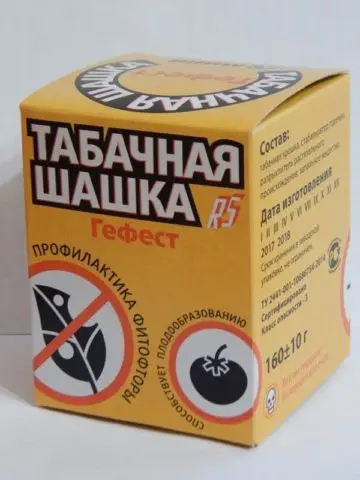
It should be noted that nicotine only kills adults.
Modern biochemical agents will also help in the processing of a polycarbonate greenhouse in the spring from the whitefly. They are completely safe for future harvest. These include:
- “Aversectin C”;
- “Avertin-N”;
- “Aktophyt bioinsecticide” and a number of others.
Biological methods also include the destruction of the pest with the help of other insects. The parasitic insect of the entomophage is actively used. It lays its eggs inside the adult whitefly. As the larva develops, it grows and the aleurodid dies. It is necessary to launch an insect two weeks before planting seedlings.
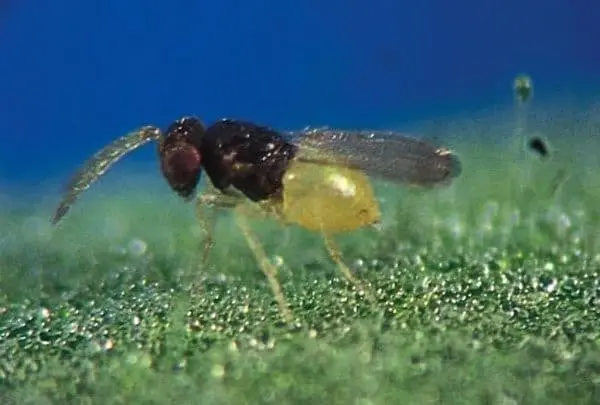
The following insects also prey on midges: lacewing, ladybug, macrolofus bug.
Another variant of the struggle is mechanical. In this case, special traps for pests are made. Bright yellow or blue color attracts aleurodides. This feature can be used as the basis for making a trap. It can be made from plywood, pre-painted in the desired color. Then it is necessary to apply a mixture of honey and rosin on it. The trap is attached to the holder and placed near the affected plants.
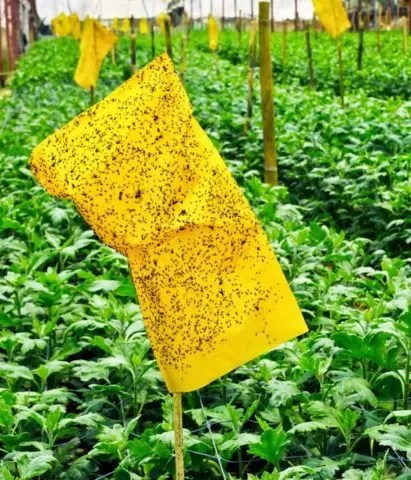
Also, bait traps can be purchased at specialty stores.
Another mechanical method is suitable in the early stages of the appearance of midges. It is very simple: the insect is knocked down with water pressure from a hose, after which the stems and leaves are rubbed by hand. Of course, this takes a lot of time, and this will be relevant only with a small number of whiteflies.
Preventive measures
The easiest way to prevent the appearance of the whitefly than to fight it. And for this, it is necessary to carry out certain preventive measures, which include:
- for the winter period, it is best to remove the cover from the greenhouse, at least the top layer;
- if the coating has not been removed, it is imperative to carry out spring disinfection, the frame must be treated with bleach;
- immediately before planting, it is better to shed the soil with a solution of copper or iron sulfate.
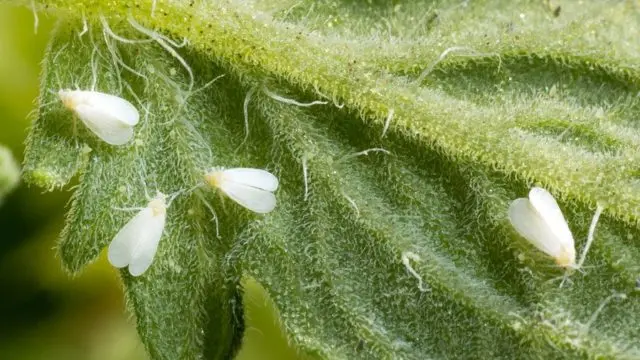
During the autumn cleaning, it is important to follow a few rules. First, all the greenhouse land must be dug deep and well before frost. The second – after the crop is fully harvested, all plant residues are completely removed and burned. Third, there is no place for compost in a greenhouse. You can not place it directly in the greenhouse: all pests can go from there. Both autumn and spring processing of a whitefly polycarbonate greenhouse plays an important role in the issue of prevention. If you follow all the instructions, you can completely avoid the appearance of a pest.
Conclusion
So, it is not so easy to process a greenhouse from a whitefly in the spring. This requires a whole range of measures that must be carried out systematically. But the main thing is the result. If various methods are used in the fight against aleurodides, then success can be achieved over time. Of course, it is best to prevent the appearance of a pest in the greenhouse. And for this, you need to follow simple preventive measures that will save you from further problems with the whitefly.









